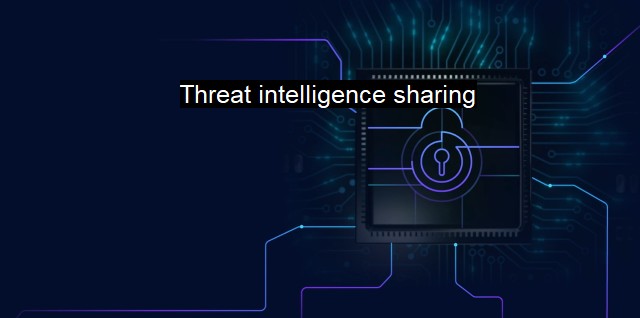What is Threat intelligence sharing?
Threat Intelligence Sharing: Strengthening Cybersecurity in Today's Digital Era
Threat intelligence sharing is a vital aspect in the evolving field of cybersecurity characterized by the transfer and exchange of information between entities about cyber threats. Given that cybersecurity is an increasingly vital concern for organizations worldwide, it becomes imperative that intelligence pertaining to potential threats is shared between entities to aid in their strategies and defenses against cyber attacks.Culminating as a development in the cybersecurity landscape, threat intelligence sharing has proven to be an effective mechanism to detect and combat cyber threats. It furnishes reliable, actionable, and timely information about existing threats and those that are emerging.
The framework of threat intelligence sharing encompasses various types of information. This includes, but is not limited to, threat indicators (identifiers for malicious activities), tactics, tools, techniques, procedures used by attackers, as well as strategies and defenses. It involves providing organizations with this data, allowing them to better equip their systems and enhance their defenses against malicious cyber activities. More specifically, through proactive engagement with a diverse cross-section of organizations, the sharing of threat intelligence provides exposure to various attack patterns, malware types, and vulnerabilities that may remain unnoticed otherwise.
One of the significant benefits of threat intelligence sharing is that it can help organizations to inform, enhance and update their cybersecurity activities. if one entity shares information about a new type of malware or a previously undiscovered vulnerability, other organizations can use that information to bolster their own defenses. Consequently, by identifying potential attacks before they occur, it's possible to prevent breaches altogether.
Similarly, another benefit is the potential for improved threat detection and responsive capabilities. By reviewing data related to cyber threat activities, organizations can increase visibility into their networks, reinforcing their network security, improving detection capabilities, and refining incident response strategies.
Intelligence sharing can be performed by organizations in several ways. They can either exchange data with each other directly, or they can share it via third-party platforms that offer a controlled environment for data dissemination. threat intelligence sharing isn't limited to public or private institutions alone. Government entities, independent research teams, specialized cyber defense firms, and increasingly, hybrid entities also participate in intelligence sharing, creating a more comprehensive security network.
There are challenges that are inherent to threat intelligence sharing. The proliferation of data shared can inundate organizations with immense information from which parsing out usuful insights can be strenuous. misinterpretation of threat data can present its own set of problems where inadequate understanding can lead to the under or overestimation of risks, leading to inappropriate handling of threats.
a truly global and comprehensive system for threat intelligence sharing remains elusive. The bulk of this activity still happens within national borders or between organizations in the same industry, potentially limiting its effectiveness.
Antivirus plays an integral role in threat intelligence sharing. In essence,

Threat intelligence sharing FAQs
What is threat intelligence sharing?
Threat intelligence sharing is the act of exchanging information about potential cyber threats among individuals, organizations, and governments in order to improve overall security posture. This information can include indicators of compromise, attack patterns, and other threat-related data.Why is threat intelligence sharing important in cybersecurity?
Threat intelligence sharing is important in cybersecurity because it allows organizations to stay informed about the latest threats and take proactive measures to prevent them. By sharing information about threats, companies can develop a more comprehensive understanding of the threat landscape and respond more quickly and effectively to new threats.What are some challenges associated with sharing threat intelligence?
Some challenges associated with sharing threat intelligence include concerns around data privacy, legal and regulatory issues, and the difficulty of identifying trusted partners to share information with. Additionally, organizations may be hesitant to share sensitive threat intelligence with others due to fears that it may be used against them in some way.What are some best practices for sharing threat intelligence?
Some best practices for sharing threat intelligence include establishing clear policies and procedures for sharing information, carefully vetting potential partners before sharing sensitive data, and using secure communication channels to transmit information. It is also important to prioritize the sharing of threat intelligence that is relevant to specific sectors or industries, and to actively participate in information sharing communities and forums.| | A | | | B | | | C | | | D | | | E | | | F | | | G | | | H | | | I | | | J | | | K | | | L | | | M | |
| | N | | | O | | | P | | | Q | | | R | | | S | | | T | | | U | | | V | | | W | | | X | | | Y | | | Z | |
| | 1 | | | 2 | | | 3 | | | 4 | | | 7 | | | 8 | | |||||||